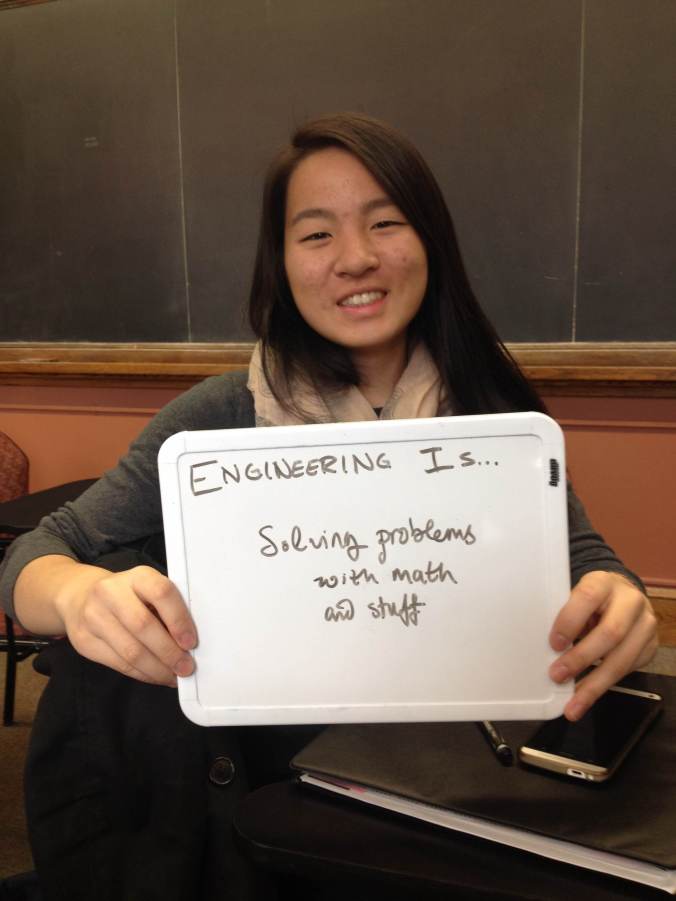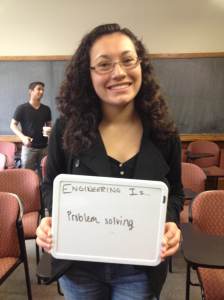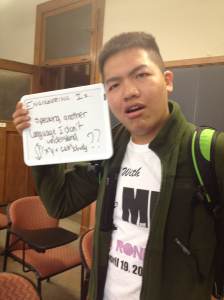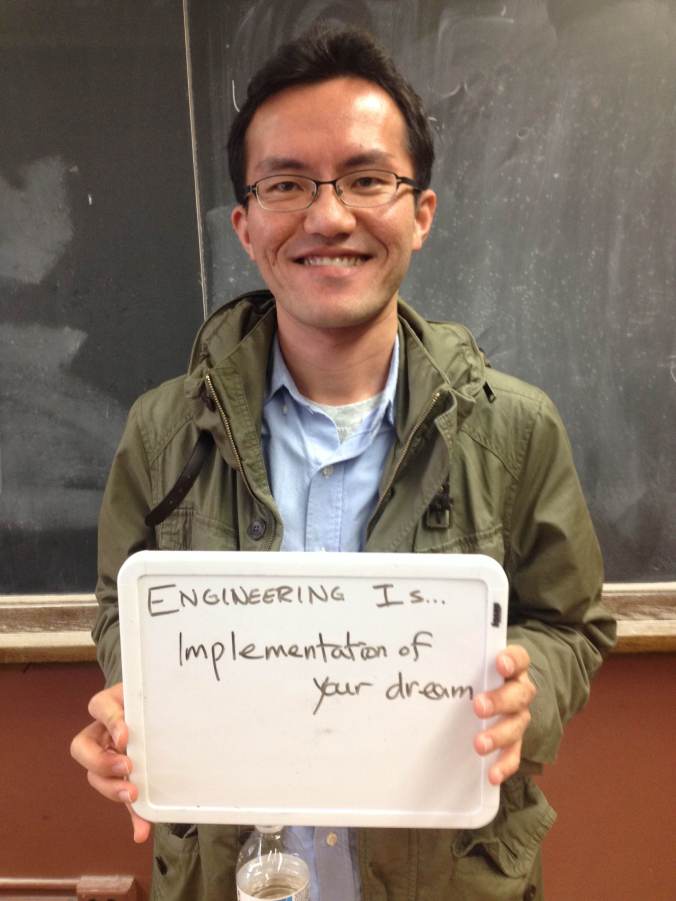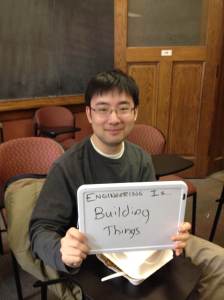I wrote this blog for Professor Keith Quesenberry‘s class at Johns Hopkins University titled “Blogging and Online Copywriting.”
Overall, I had a positive experience with blogging. Below is an infographic covering my blogging process and what I learned throughout it.
Thank you for being a part of the process!
Why Laptops Are Gathering Dust in Developing Countries
“Everybody agrees that whatever the solutions are to the big problems, they … can never be without some element of education.” –Nicholas Negroponte

Students in Bhutan using OLPC laptops. https://flic.kr/p/7aa6qg
Negroponte
Nicholas Negroponte is not only the founder of the MIT Media Lab who doubles as an investor, inventor, and extreme thinker, but he is also the founder of the One Laptop per Child program. The program’s mission is to “empower the world’s poorest children through education” by providing “each child with a rugged, low-cost, low-power, connected laptop.”
Negroponte dreamed big. His goal was to put $1oo laptops in the hands of underprivileged children in order to perk their curiosity and promote education. And he succeeded, in part. Over 2.5 million children in Latin American and Africa have laptops that cost roughly $200, double the goal. So, how did he make a $200 laptop and more importantly, why haven’t you heard about the 2.5 million he distributed?
The Computer
Building a computer for $200 is no small feat. This realization was achieved through:
- Lowering cost display
- Turning down background lighting to preserve energy
- Black and white option
- Huge bulk orders

XO Laptop distributed through One Laptop Per Child. Photo credit to Scott Beale / Laughing Squid
Considerations
- Durability
- Weather conditions
- High heat and humidity
- Easy repair
- Local language
Learning: Why Wasn’t OLPC a Hit?

How can you reach a goal if you don’t set one? https://flic.kr/p/7XjosB
1. No clear goals. It seems like Negroponte simply loved the idea of providing kids with knowledge at their fingertips. And that is great. But what was his goal? Was he trying to improve test scores? (That didn’t work.) Did he want the next Google programmers to come out of Africa? The project lacked a clear means of measuring success and thus a clear focus.
2. No customization. Yunus had some words of wisdom. Culture matters! For example, the music app did not allow students to produce beats that matched some of the local traditional music, so they just stopped trying.
3. Lack of training. Apparently, only 70% of teachers had a mere 40 hours of training before laptops were distributed to their students. Teachers take years to learn how they teach best; trying to retrain an old dog (no offense teachers) in 40 hours is quite ambitious.
4. Misunderstanding of the target audience. OLPC wanted to lower costs, so (as mentioned above) they sold in bulk. They initially wanted orders to be a minimum of 1 million laptops. For a developing country, that’s an investment of around $200 million for a product they don’t know will be successful.
Not Done Yet

Education is the way to go. Forge on, Negroponte.
Courtesy of Pratham Books. https://flic.kr/p/61T8sa
Did Negroponte fail to leave the legacy through OLPC that he had envisioned? Yes, I think so. Is he done yet? Absolutely not.
I admire Negroponte. He has a huge heart. He dreamed big about helping underprivileged children discover education and technology. He took it to heart when a child in Nigeria said he “valued his laptop more than his life.” He envisioned a world where education opened doors. Education is essential to any progress.
I will learn from Negroponte’s past projects and cheer him on to his future endeavors. (Yes, he has kept tweaking the laptop and now is distributing $100 tablets.)
After all, “Cynicism is easy. Hope is harder.”
What do you think? Was OLPC a failure?
What is Engineering?
When I tell people that I’m studying biomedical engineering, their first reaction is usually, “What is biomedical engineering?”
I usually describe it as the application of engineering principles. So what exactly is engineering?
I decided to ask some Johns Hopkins Whiting School of Engineering students their opinions on engineering. This was fun for me to do, and I’m excited to share with you what everyone said.
Engineering is…
What do YOU think? What is engineering?
The Promised Land
Foreign Affairs Symposium Anne Smedinghoff Award
Last night, I had the opportunity to hear from Shabana Basij-Rasikh, the president and co-founder of the School of Leadership, Afghanistan, which is Afghanistan’s first boarding school for women. Ms. Basij-Rasikh was presented with the Inaugural Anne Smedinghoff Award by the family of Anne Smedinghoff through the Foreign Affairs Symposium, which will be presented to an individual who is committed to education, development and global harmony.
Anne: Scholar, Diplomat, Friend
Anne Smedinghoff, who graduated from Johns Hopkins in 2009 with a degree in International Studies and served an Executive Director of the Foreign Affairs Symposium, was killed on April 6, 2013 by a suicide bomber in Afghanistan, on her way to deliver books to a local school. From the words that were said last night, I think I would have wanted to be Anne’s friend. She was an adventurer, a servant, a hard worker, and perhaps, most importantly, a good friend. In her honor, the Foreign Affairs Symposium has created the Annual Anne Smedinghoff Award and has established the Anne Smedinghoff Memorial Scholarship Fund, which will go to a student who wishes to follow in Anne’s career path of foreign service.
How much is an education worth?
I encourage you to check out Ms. Basij-Rasikh’s Ted Talk to learn more about how she risked her life to go to school or about how she started a school for Aghanistan women as a sophomore in college or how she has helped her students win over $10 million in scholarships. Oh, and by the way, she’s 24.
With poise, she spoke about how, contrary to popular belief, the people of Afghanistan love Americans and that technology and conditions have been progressively been getting better.
Moral Responsibility
One note that Ms. Basij-Rasikh focused on was that we have a moral responsibility to use our education in a way that helps others. How true. How refreshing. How forgotten. We are blessed. If you are in the small minority of 6.7% of individuals hold a college degree, you are extremely blessed. And you are extremely obligated. There is a weight that comes with privilege.
When I asked Ms. Basij-Rasikh about what we—as college students—could do, she spoke about getting involved in the SOLA’s Skype mentoring program. For instance, one of the girls wants to be a businesswoman; her mentor works for a hedgefund. Ms. Basij-Rasikh mentioned that one of the girls wanted to become an engineer.
In the following reception, I asked Ms. Basij-Rasikh if there were engineering opportunities in Afghanistan. She replied, “Afghanistan is like a blank slate. It would be your promised land. There are so many problems.”
Inspired
Needless to say, I am inspired. Inspired by the bravery and sacrifice of Anne and the passion and grace of Ms. Basij-Rasikh. I am not content to watch others suffer when I have the skills to do something about it. And you shouldn’t be either.
The Key to Development
During Intersession, while many Hopkins students were sleeping and eating at home or taking classes at Hopkins, Yunuscan Sevimli, Sakina Girnary, and Makesi Paul were halfway across the world, asking questions, exploring a new culture, and engineering life-changing devices. I got the chance to catch up with Yunus to hear about his travels and what he learned.

“The key to development is human interaction.” https://flic.kr/p/nhNXc
Monica: Give me some background: who are your partners for this project and how is it being funded?
Yunus: We are working through Global Engineering Innovations within the Institute of NanoBiotechnology at Hopkins. GEI’s goal is to determine a need, develop solutions, and carry out those solutions in developing countries. There is a large focus on the implementation aspect of the project. GEI has also sent Hopkins students to Tanzania and Brazil. Our advisor, Dr. Elisseeff, connected us with Kopernik, an international NGO headquartered in Indonesia that aims to create technologies and give them to people who need them most.
Monica: What was your goal going into Indonesia?
Yunus: Our specific goal was to initiate contact between Hopkins and Kopernik. Next, we wanted to learn the culture so that we could figure out any problems and come up with solutions. Oh, and obviously, to learn as students.
M: Let’s dive right in. What is your project?
Y: We visited two target villages in East Java and both of them were very different regarding their income. In Bojonegoro, the biggest problem was rice processing. The process was very inefficient, and throughout the process, they would cut themselves and would experience respiratory problems. We essentially combined some of the normal processes into one machine that would do all of it.
In Tuban, a coastal village, the main source of income is fishing. But there was no technology to store fish (no refrigerators), so they would dry the fish. This created a lot of sanitation concerns and became a problem because it rains all the time there. We created a solar furnace to dry the fish.

A fisherman in Indonesia. https://flic.kr/p/hi7M3D
M: How important is it to understand the culture throughout the engineering process?
Y: If you’re trying to make a difference, you should start with the culture. Start with them. You should listen to them completely objectively without any assumptions. That’s really important.
We spent most of our time interviewing people and households. We went into Indonesia knowing they may have “these problems,” but we weren’t sure until we actually talked to them. For instance, we thought/ were told that corn harvesting was a bigger deal but when we went there, we heard that rice harvesting was actually a bigger deal.
M: What was your biggest takeaway from your field experience in Indonesia?
Y: Culturally, I would personally call myself open minded, and I have traveled abroad a lot.* But Southeast Asia is really different. Being there made me realize that I actually know nothing and how much there actually is to learn.
Technically, we had to work with local materials like bamboo, and it was a challenge. If we were doing the same thing here at Hopkins we would go to the machine shop and measure precisely, but that’s not how it works in the field. There, you would cut bamboo with saws and see if the pieces stuck together.
*Yunus is from Istanbul, Turkey!

“If you’re trying to make a difference, you should start with the culture.” https://flic.kr/p/9u346u
M: How have your engineering classes prepared you for this project and where were they lacking?
Y: When I went there, I had taken senior design for a semester. In that semester, I learned how to use a lot of hand tools. For our first three years, we did a lot of learning engineering. But we just started doing engineering through this senior design project. This helped me learn how to make an actual prototype. My experiences from our hands on classes are what really helped me.
But it was also a culture shock. I don’t know if there was a way to be prepared for that.
M: What was so shocking about it?
Y: The way of thinking. For example, the people there thought, I cut my hands day after day, and so did my father and his father and his father… That’s just how it is, and you get used to it. We view these problems and say, “There has to be a better way. How could we solve this?”
M: What is the potential impact for your project?
Y: Obviously to improve people’s lives. This is going to become a business. We are doing this with local materials and tools, so that a local carpenter can make it and sell it to people. It’s going to improve the quality of life of people (no more cutting hands, respiratory problems). It will also will create awareness; most people didn’t even know they had respiratory problems.
Embed from Getty ImagesM: What is one piece of advice you would give to aspiring engineers who want to make a difference in the developing world?
Y: There are a lot of things that are hard to calculate before you actually implement a solution. A lot of cultural considerations. Engineering done in a lab in Baltimore is barely applicable to a fisherman in East Java. Human interaction is the key to development. You could create the best technology and if it doesn’t fit into cultural norms there, it won’t help them.
How important do you think culture is in engineering considerations? If you could travel anywhere to engineer a project, where would you go?
You Go Girl!
In honor of Women’s History Month, I wanted to celebrate the accomplishments of women in the field of engineering. Who knew that we were so creative?

Engineering… We Can Do It!!
https://flic.kr/p/9pT6td
Chocolate Chip Cookies

Chocolate chip cookies are easily my favorite dessert. Bless you, Ruth Wakefield. https://flic.kr/p/5sfmrn
Computers and circular saws are great, but if we’re being honest, I think that the chocolate chip cookie would be at the top of the list for greatest inventions. At least inventions for your stomach. Chocolate chip cookies were created by Ruth Wakefield in 1930, when Wakefield had to create some Butter Drop Do cookies for guests at the inn that her husband owned. There was not enough time to emlt the chocolate for the recipe, so Ruth just threw some pieces of a Nestle chocolate bar in the batter. Dear Ruth, my stomach thanks you for your contribution to society.
The Compiler and COBOL Computer Language

Grace Hopper in 1952 working on COBOL.
https://flic.kr/p/5eV6PE
You can’t mention wome in engineering without talking about Grace Hopper. Hopper worked on the first large-scale computer in the US, the Mark I at Harvard. She invented a system called the Compiler to translate English into computer code. Brilliant. Also, you know you’re legit when you have a warship named after you.
Submarine Telescope and Lamp
Have you ever seen the cool pictures of weird sea creatures that meander on the ocean floor? You can thank Sarah Mather for patenting the submarine telescope and lamp in 1845. This invention unlocked the ability to explore the most unexplored territory on earth—the ocean.
Kevlar
Kevlar saves lives, protects people and makes the ride of life much more enjoyable. Kevlar is the material that makes bulletproof vests, helmets tires, skis, and hiking gear. Stephanie Kwolek worked at Dupont to create this fiber that is as strong as steel.
Windshield Wiper
Can you imagine driving your car without a windshield wiper? I’m thinking the sight would look something like this:
Thank goodness for Mary Anderson, who wasn’t satisfied that every NYC tram driver had to stop every few minutes to get rid of the snow on his front window. She received her patent for the squeegee device in 1903, and now it would be impossible to find a car without it.
How has the presence of more women in the engineering disciplines changed the field?
Most of the information that I used for this post was found through an article by HowStuffWorks called “Top 10 Things That Women Invented.”
This One Device Could Find Malaysia Flight 370

On March 8, Malaysia Airlines flight 370 with 239 passengers and crew members vanished. https://flic.kr/p/7wsx2N
On March 8, Malaysia Airlines Flight 370 went missing. Poof.
It’s been over two weeks, and authorities still don’t know much about what happened to the 239 passengers and crew members or the 209 feet, 656,000 pound Boeing 777-200ER aircraft.
TWO HUNDRED AND THIRTY-NINE. How do 239 people just go missing in a massive commercial airliner? Or of equal importance, how can we prevent this from happening in the future?
The LuminAID
If the 239 passengers aboard that plane had been equipped with this one $20 device, they may have been safely in the arms of their loved ones by now. That device is the LuminAID, an inflatable, waterproof, solar-powered light. The founders of the LuminAID, Anna Stork and Andrea Sreshta, were looking for a way to help in natural disaster relief situations after the earthquake in Haiti in 2010 when they found a need, an engineering problem that they could help solve. After natural disasters, people send food, water, and even medical supplies, but even then, they are (literally) left in the dark. Because of this, kidnappings and rapes occur with a higher frequency amidst this darkness–an even greater reason to solve this problem.
Stork and Sreshta created a device with disaster relief in mind, so 50 LuminAIDs can fit into the same size box as a conventional 8 flashlights. Without a doubt, this light be used in future disaster situations, as it is portable, solar-powered, and waterproof.
How Does This Apply to Malaysia Flight 370?
Yesterday, it was announced that Chinese satellites had spotted a 74 feet by 43 feet object in the southern Indian Ocean, which officials believe may be linked to the missing aircraft. Remember that the plane went missing 43 seconds after 1:20am on March 8. There are 2 options at this point:
A) the plane could have crashed/landed elsewhere such that there were survivors
OR
B) the plane could have crashed/landed elsewhere such that there were no survivors
AND
1) the plane could have crashed/landed such that parts of the plane would be relatively large
OR
2) the plane could have crashed/landed with small plane fragments remaining or could have burned such that few pieces remain
In case B2, authorities can’t do much. In cases A1, A2, or B1, though, the story could have radically changed if LuminAID was involved.

With less than 100 lights in this graphic, it’s obvious that 239 lights might have made shown up on a satellite image of the ocean. (I do not endorse any messages from this image; I am purely using it to show the impact that lights have in the darkness.) https://flic.kr/p/43Zfx6
Imagine if 239 people were floating in the ocean with lights illuminated during the night sky. If each person (or LuminAID in the case B1) took up 13.3 cubic feet in the water, they would cover the same amount of space as the object spotted by China in the broad daylight. Seems pretty hard to ignore to me.

“The light shines in the darkness, and the darkness has not overcome it.” John 1:5
https://flic.kr/p/a4MkTe
Maybe this idea isn’t just for post-tragedies. Maybe the LuminAID is a pre-tragedy device. Maybe LuminAID and inventions like it can stop (or at the least) minimize tragedies and mysteries like the Malaysian flight. Maybe next time you’re on an airplane that will be covering water, you’ll have an inflatable life vest with a solar-powered light that can last for up to 16 hours.
What are your thoughts on the Malaysia airplane mystery? How can we aim to prevent this in the future?
Bring It On.
Last week, I gave a few ideas on how to fundraise your project. This week, I will be continuing that idea by giving you a list of some of the great competitions you can apply to for funding. Some are design-oriented, while others are business-minded, so bring out all you’ve got!
Rice 360 National Undergraduate Global Health Technologies Design Competition
- Target: Undergraduate College Students
- Focus: Global Health Design
Georgia Tech Global Social Venture Competition
- Target: College Students (required to have one graduate student per team)
- Focus: Business with Social Impact Assessment
- Uniqueness: Offers mentorship, exposure and $50,000 in startup money
Rice Business Plan Competition
- Target: Graduate College Students
- Focus: Business
- Uniqueness: More than $1.3 million in prize money
Johns Hopkins University Business Plan Competition
- Target: Undergraduate and Graduate College Students
- General Business and Social Enterprise categories only open to JHU students
- Medical Technology and Life Sciences category open to all
- Focus: Business
- Uniqueness: Competing for more than $72,000 in prize money
Emory Global Health Case Competition
- Target: Undergraduate and Graduate Students
- 3 disciplines must be represented per team
- One team per university
- Focus: Global Health Case Consulting/ Problem Solving
- Uniqueness: Each team has five days to prepare a consulting report for a global health issue that is announced, in competition for a $6,000 prize.
NIH Design by Biomedical Undergraduate Teams (DEBUT) Challenge
- Target: Undergraduate College Students (specifically biomedical engineering majors)
- Focus: Solving unmet clinical needs
- Uniqueness: Winning teams will be honored at the Annual Meeting of the Biomedical Engineering Society
IEEE Presidents’ Change the World
- Target: Engineering Students
- Focus: Solving real-world engineering problems
- Uniqueness: Emphasis on engineering, science, computing, and leadership skills
I’ve outlined just a few of the myriad of competitions out there. Let me know which ones I missed.
Get out there and compete!
$Gold Digga$
You Need Money

You need a financial investment to build prototypes for your engineering projects. http://flic.kr/p/aFAaK6
The idea for building medical devices for developing countries is great, but…
if you don’t have the capital, it’s hard to build something out of nothing.
How do you fund a developing world project?
Below are three ways to fund your project!
Don’t Break the Bank, Make the Bank
Crowdfunding

Crowdfunding: when a group of people financially support an idea/ product. http://flic.kr/p/eckTys
- According to HongKiat.com, “Crowdfunding… is a funding method where common people like you and me, henceforth the crowd, fund your personal or business project with their own money.” Crowdfunding allows other people to become involved in your project financially. Depending on the site you use, the supporter may then receive a product from you based on their level of financial giving. Forbes has outlined the Top 10 Crowdfunding Sites for Fundraising; Engineering for Change has added their two cents as well.
- If you have time, check out this great report for the Department for International Development of the UK government regarding crowd funding.
- Crowdfunding in Action
i. The Aezon X-Prize Team from Johns Hopkins is a prime example of an engineering design team using crowdfunding. They are using the Indiegogo crowdfunding site to raise funds to develop their device which will be capable of diagnosing 15 diseases. They are in the running to win the Qualcomm Tricorder X-Prize, with prizes of up to $7 million.

Aezon Health Lab Box. Aezon is using crowd funding to raise $10,000 in the hopes to win the $7 million prize for the Qualcomm Tricorder X-Prize. Photo courtesy of aezonhealth.com, used with permission from Neil Rens.
University Collaboration
- Universities love innovative, motivated students that they can brag about. Many universities try to promote collaboration and creativity through dispersing student research grants. I can only point to specific grants for Johns Hopkins, but many universities provide funding for extracurricular student projects.

College costs a lot of money. Take advantage of all that your university has to offer. If you don’t, you’re paying for someone else who is. http://flic.kr/p/b6MCQF
2. Two specific Johns Hopkins grants administered to foster innovation and research are the PURA Award and the Student Initiatives Fund.
Traditional Fundraising
- It’s time to harness your inner neighborhood kid on the streetcorner selling lemonade! Get creative and think of ways in which your group can raise money for your project. I’ve listed some examples to help you get started.
i. Organize a 5k (UMassAmherst Engineers Without Borders)
ii. Organize an auction and social
- Montana State University EWB raised over $25,000
- UMassAmherst EWB raised over $13,000 with this method.
iii. Hold a recital, like UCSB EWB
iv. Plan a dessert reception and project showcase
v. Organize a Quidditch Tournament
Check back in next week when I overview the top competitions to raise money for your engineering innovation. How have you raised money in the past for your engineering projects? What did I miss?

Can you compete? http://flic.kr/p/7T2e8f
“Do You Want to Build a Snowman?”
Frozen
What does the new Disney movie Frozen have to do with engineering? How might the plotline of Frozen changed if any of the characters were engineers? Now, I’m not saying that engineers don’t believe in the power of sisterly love to fight climate change, but I am saying that we would not have taken the time to let our sisters freeze in hopes that we could figure something out (you’re welcome, Natalie, my awesome twin sister). You don’t believe me? I’ll prove it to you.
Below are three neat devices that student engineers have invented or are developing so that they can take temperature into their own hands.
When a baby is born and he or she is deprived of oxygen, which impedes brain function, possibly leading to cerebral palsy, mental disability, or death, what do you do?
Cool the baby.

The face of one cool baby.
http://flic.kr/p/6DM1N

No, cool THE baby!
http://flic.kr/p/6DM1N
That’s right, there is a 72 hour window in which you can lower the baby’s temperature to effectively rescue brain cells. A team of biomedical engineers at Johns Hopkins invented a $40, easy-to-use solution that is built of a clay pot, plastic-lined basket, and a sand and urea-based mixture. When water is added to the mixture (what is used in cold-packs), the heat is extracted from the basket holding the child. Brilliant!
Babies are important. Not only are they adorable, but they are the future. A group of Stanford students who understood this saw that many of the 4 million premature babies that die within the first month after birth per year are from developing countries. The main problem for these infants is regulating their temperature. These Stanford students invented a sleeping bag-like solution that can maintain a constant for up to six hours without electricity. The infant warmer is composed of a phase-change material that absorbs heat and slowly disseminates it to the infant.

I hope future iterations of this sleeping bag-like product come in ladybug form. http://flic.kr/p/5CNQmK
Control that body temperature; don’t let it control you. And save some lives along the way.
We usually think of developing countries as warm, tropical places. This presumption is not necessarily always true, though. A portion of developing countries lie above the Tropic of Cancer and temperatures can dip low, causing a need for heating systems to avoid freezing. Students at Lulea University of Technology in Scandinavia created an “simple stove with integrated heat recovery” at a minimal cost that could be used in North Korea, Afghanistan, Mongolia, Siberia and northern China.
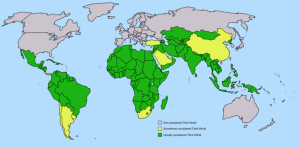
Third world countries span beyond just tropical climates. http://flic.kr/p/4ZPsVR
What other projects do you know of? Where are some areas that need improvement from engineers regarding temperature? Are there any other ways that engineers relate to Frozen?

